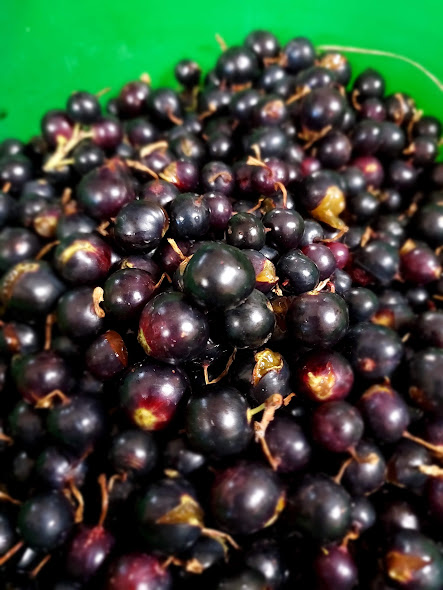When I mention black currants while talking fruit trees and shrubs with people in Albuquerque, I have come to expect that we are often starting the conversation thinking about different things. Most commonly, people have experienced or heard about the European black currant, Ribes nigrum.
They recall an earthy, resinous flavor with nice sweetness and a tart finishing kick. European currants are best reserved for cooking. With their strong flavor, they make incredible sauces and condiments and are equally delicious as preserves and in pies and tarts. These black currants have a devoted following. Because the flavor is very distinct, I have found people often have a binary reaction when I mention the fruit: either pleasurable nostalgia or occasionally disinterest or dislike.
The other thing people confuse for black currants are little dried raisins, similarly dark in color and confusingly sold as “currants.” These fruits are made from “raisins de Corinthe,” Greek grapes grown, dried and shipped for hundreds of years from a port of that name. These are not the black currants I am talking about.
While I do like eating and growing the European black currant here in Albuquerque (mostly as a shady understory plant), I am much more excited about our native black currant — Ribes aureum— the clove currant, aka golden or buffalo currant.
The clove currant is more fruity, less funky and a bit sweeter than its European counterpart. There is still some pleasing complexity and tartness to the fruit, but nothing mouth-puckering. They are perfect for fresh eating — or freeze them so they can be thrown in a smoothie or used as a blueberry replacement in pancakes when the snow flies. The fruits can get nice and large for a currant, from ¼ inch up to ¾ inch in size, with a shiny, blue/black color. Even the shrubs themselves are a bit larger, reaching 5 to 6 feet at maturity.

As an ornamental, the clove currant is a bit too floppy for a hedge, and they do send out runners — so consider yourself warned. However, if you give them a little space as a focal point in the garden, you will be rewarded with abundant dangling, bell-shaped yellow flowers in the spring that draw you across the yard with an overpowering vanilla and clove scent and, of course, all the incredible life that visits the flowers for their nectar. You will also get to see them with their dusky-crimson foliage in the fall. For most of the summer, you and the birds can keep eating the fruits as they ripen singly or in small clusters.
Clove currants handle the New Mexico sun and heat with grace, but they are quite adaptable and can do well with partial and even full shade. Along the river, they are only occasionally shaded out by taller thickets. If you’re out wandering in the bosque this spring, keep an eye out (or follow your nose) for these incredible flowers and fruits.
Other articles that might be of interest:
Vegetable and Herb Gardening in Small Spaces
Easy Edible Plants for First-Time Growers

Have a question about the article? AskAnExpert@abcwua.org

